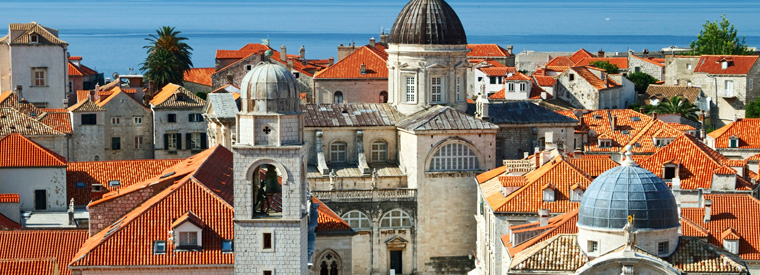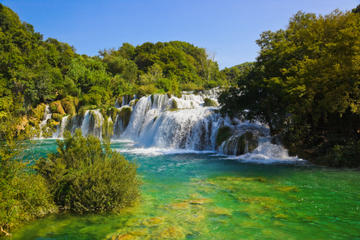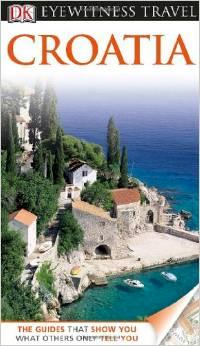Discover magical Croatia

Despite the hype, Croatia's pleasures are more timeless than trendy. Crystalline water laps gently at a 1,778 km long coast and no less than 1,185 islands. Away from the coast, eight national parks protect pristine forests, karstic mountains, lakes and waterfalls in a landscape of primeval beauty.
A | B | C | D | E | F | G | H | I | J | K | L | M | N | O | P | Q | R | S | T | U | V | W | X | Y | Z
» Marjan
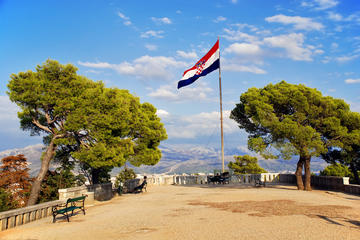
A short walking distance from Diocletian's Palace, this hilly peninsula is a recreational park for both locals and visitors. A protected nature reserve since 1964, the park is dotted with pine trees and Mediterranean shrubs. Some of Split's best beaches are at the foot of Marjan hill and are easily reachable by bicycle which you can rent at the entrance. To enter the natural preserve, just follow the steps from the Veli Varos neighborhood. Keep climbing and you'll reach the Telegrin belvedere -- on a clear day you can see as far as Vis Island …
» Mimara Museum (Muzej Mimara)
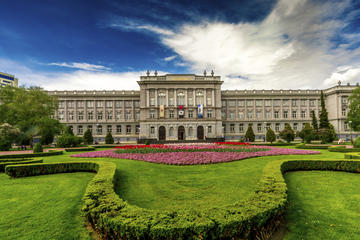
With its grand neo-Renaissance facade presiding over Roosevelt Square in Zagreb's Donji Grad (Lower Town), the Mimara Museum (Muzej Mimara) is impossible to miss, but the dramatic building is more than just a pretty face. This is the city's biggest and most important art history museum, housing over 3,750 works, including paintings, sculptures and crafts, spanning over three millennia. The permanent exhibition is made up of the personal collections of Wiltrud and Ante Topic Mimara, an extraordinary assemblage of artifacts bequeathed to the city in 1987 …
» Mljet Island
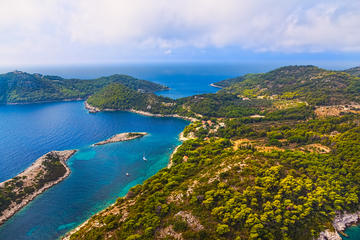
The southernmost of Croatia's principal islands, Mljet is best known for its eponymous National Park, which occupies its western cape, and is connected by ferry to mainland Dubrovnik and the nearby Peljesac Peninsula. Dominated by the saltwater lakes of Veliko and Malo Jezero, Mljet National Park offers a scenic backdrop of pine forests and glittering waters, with miles of shaded hiking and cycling trails encircling the lakes. Marooned on an islet on Veliko Jezero is the 12th-century former Benedictine monastery, now transformed into a restaurant …
» Peljesac Peninsula
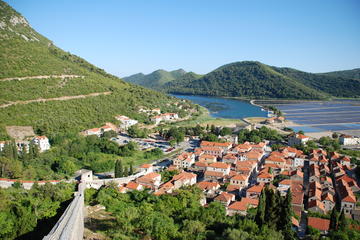
Characterized by its sunny climate and fertile landscape, Croatia's Peljesac peninsula is one of its largest, renowned for its Plavic Mali grapes and wine production. Jutting out into the Peljesac channel and rubbing shoulders with Korcula Island, the scenic peninsula benefits from its strategic location, at the center of southern Dalmatia and is a popular day trip from nearby Dubrovnik. Starting at the coastal town of Ston, home to the Great Wall of Croatia and famed for its local oysters, the Peljesac Peninsula stretches for 70km …
» Peristil Square
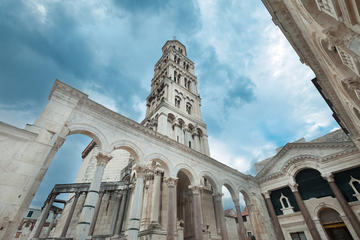
Peristil Square is Split's main square, the former entry hall in Diocletian's Palace. It is derived from a Roman architectural term called the peristyle, an open colonnade surrounding a court. The spacious central courtyard is flanked by marble columns topped with Corinthian capitals and richly ornamented cornices linked by arches. There are six columns on both the east and west sides, and four more at the south end, which mark the monumental entrance to the Vestibul …
» Pile Gate
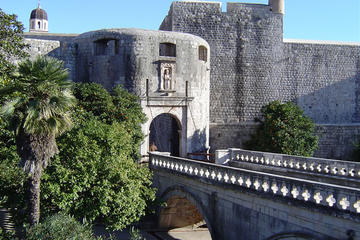
Pile Gate is a grand entrance into Dubrovnik's Old Town, on its western wall. Built in 1537 to protect the city from invaders and monitor trade, Pile Gate was originally reached via a wooden drawbridge, which was raised every evening, the gate locked and the key handed to the prince in an elaborate ceremony. Pile Gate has an outer and inner gate with statues of St. Blaise, the city's patron saint. The St. Blaise statue in the niche of the interior arch is the handiwork 20th-century Croatian sculptor Ivan Mestrovic …
» Plitvice Lakes National Park
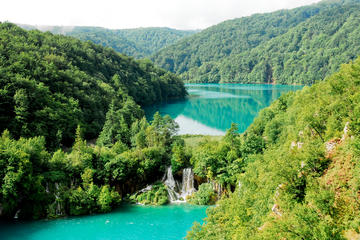
A national park since 1949 and a World Heritage Site since 1979, Plitvice (prounounced pleet-wee-cheh) is still relatively new on the European tourist trail, but certainly not undiscovered. Set at the top of Croatia's Adriatic region in a karsted area of the Dinaric Alps, just two hours from the capital city of Zagreb, the park is visited by over 1.2 million people each year. A sprawling limestone and dolomite chalk landscape of blue-green lakes, mossy caves, trickling streams and spectacular waterfalls …
» Rector's Palace
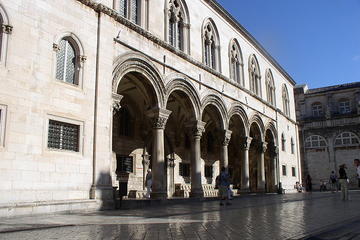
The elegant Rector's Palace was built on the site of an old fort near the harbor in Dubrovnik's Old City. The Rector was the town's puppet ruler, set up to project an image of order and importance to the outside world. Elected for only one month, the Rector was not allowed to leave the palace except on official business. In addition to the Rector's office and private chambers, the palace was the seat of the minor council and state administration and contained a watch-house, a prison and an armoury …
» Split Cruise Port
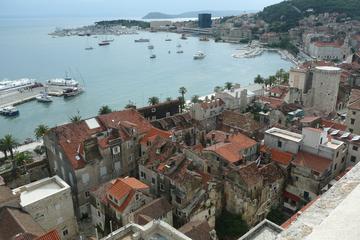
Split is the largest city on the Dalmatian coast and Croatia's second biggest city. It is famous for the well-preserved Diocletian Palace, a Roman Emperor's retirement palace dating from the 4th century AD which still forms the city center. Split also has wonderful beaches and an exemplary cafe life. In front of the palace walls along the waterfront is the Riva, which is lined by outdoor cafes and always teeming. During summer, Split becomes a focus for music and dance festivals. The city is also a major ferry port for the popular nearby islands …
» Sponza Palace
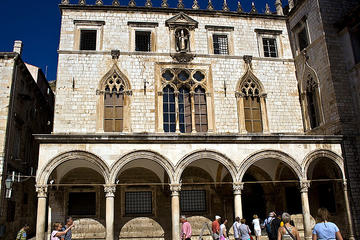
At the end of the Placa - or Stradun - in Luza Square stands the gorgeous Gothic-Renaissance Sponza Palace. Built in 1516-1522 to serve as a customs house, Sponza is one of the few buildings to have survived the 1667 earthquake that levelled much of the city. Designed by chief architect Paskoje Milicevic, the Palace is a mixture of Gothic and Renaissance styles popularized in the 16th century. The exquisite Renaissance porch and the sculptural ornaments of the building were carved by master stone-cutters …
» Stone Gate (Kamenita Vrata)
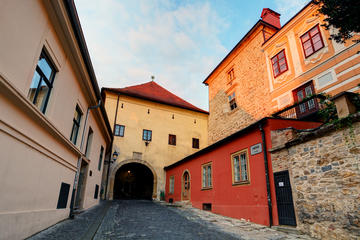
The dramatic Stone Gate (Kamenita Vrata) marks the eastern entrance to Zagreb's medieval Gornji Grad (Upper Town) and is one of the city's most iconic landmarks, providing a useful navigation point for visitors passing between the Upper and Lower towns. The stone-carved arch is more than just a gateway though local legend has transformed it into a shrine and the adjourning chapel flickers with candles, lit daily by local worshippers in honor of the Virgin Mary …
» Stradun
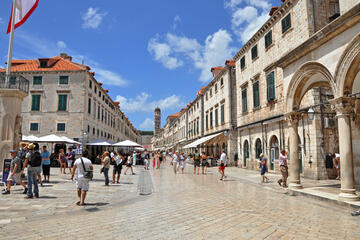
The Stradun - also known locally as Placa - is the main street in Dubrovnik's Old Town, running west from Pile Gate to Ploce Gate and the harbor in the east. The city's biggest and most iconic street, the Stradun is also the town's busiest. There's a constant shuffle of feet along its limestone and marble pavings as locals go about their business and tourists explore the architectural treasures of the Old Town. The Stradun was once a shallow water channel that divided Dubrovnik …
» Strossmayer Promenade
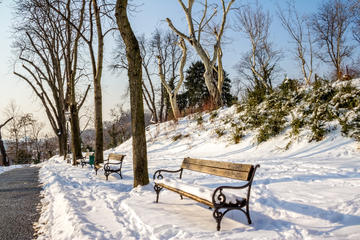
Running along the remains of Zagreb's medieval defense walls and marking the southern border of the Upper Town (Gornji Grad), the Strossmayer Promenade is one of the city's liveliest and most scenic walkways. Named after the famous 19th century Croatian bishop and politician Josip Juraj Strossmayer, the romantic terraced promenade is shaded by towering chestnut trees and its scenic lookouts offer expansive views over the Lower Town below. The easiest way to reach the promenade is by the funicular railway …
» Trakoscan Castle
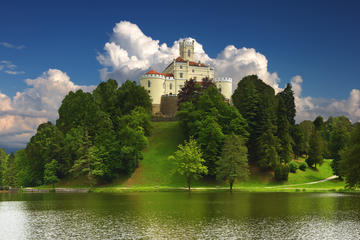
Set against a backdrop of hillside vineyards and lush woodlands in Zagorje, just an hour north of Zagreb, Trakoscan Castle is Croatia's best preserved and most visited medieval castle, and makes a popular day trip from the capital. The grand Gothic fortress dates back to the 13th century, but much of its current appearance is owed to mid-19th century restorations. Sculpted from yellow stone, the castle's white-trimmed crenellations, dramatic drawbridge and red-roofed towers add a fairytale element …
» Trogir
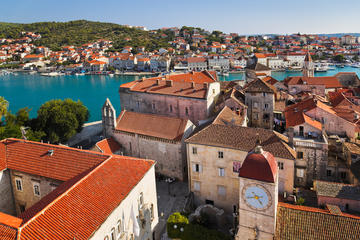
Trogir is a great day trip from Split, connected by a bridge on the other side of Split's airport (approximately an hour by water taxi or bus). It is tied to the outlying island Ciovo by a second bridge. The Greeks who found this trading settlement originally named this ancient town Tragurion (island of goats) in the 3rd century BC. It later flourished as a Roman port. With the fall of the Western Roman Empire, it became part of Byzantium and then followed the shifting allegiances of the Adriatic …
» Varazdin
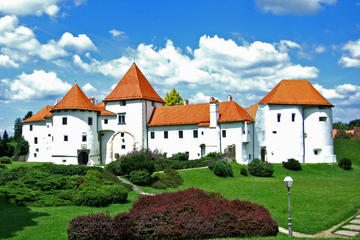
As the one-time capital of 18th-century Croatia, Varazdin boasts a strategic location on the Drava River, close by the Slovenian and Hungarian borders. A popular day trip destination from Zagreb, the lively Baroque town is a charming example of a traditional Croatian settlement, renowned for its exquisite architecture. Varazdin is also known for its long-standing affiliation with the arts, showcased by the 10-day open-air arts festival held each August and the prestigious Varazdin Baroque Evenings held throughout September …
» Zagreb Cathedral of the Assumption
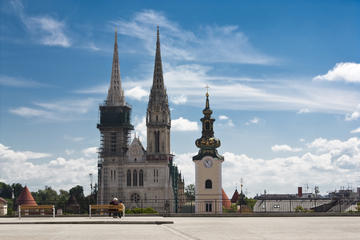
With its gothic spires towering 105 meters over Zagreb's Gornji Grad (Upper Town), the Cathedral of the Assumption of the Virgin Mary (or simply, Zagreb Cathedral) is an omnipresent landmark, as well as being one of the city's top attractions. Built in the 11th century, the magnificent cathedral is Croatia's tallest structure and largest place of worship, notable for its striking Neo-Gothic design, the handiwork of Hermann Bolle, who restored the cathedral after its destruction in the Zagreb earthquake of 1880 …
Page 1 • Page 2


